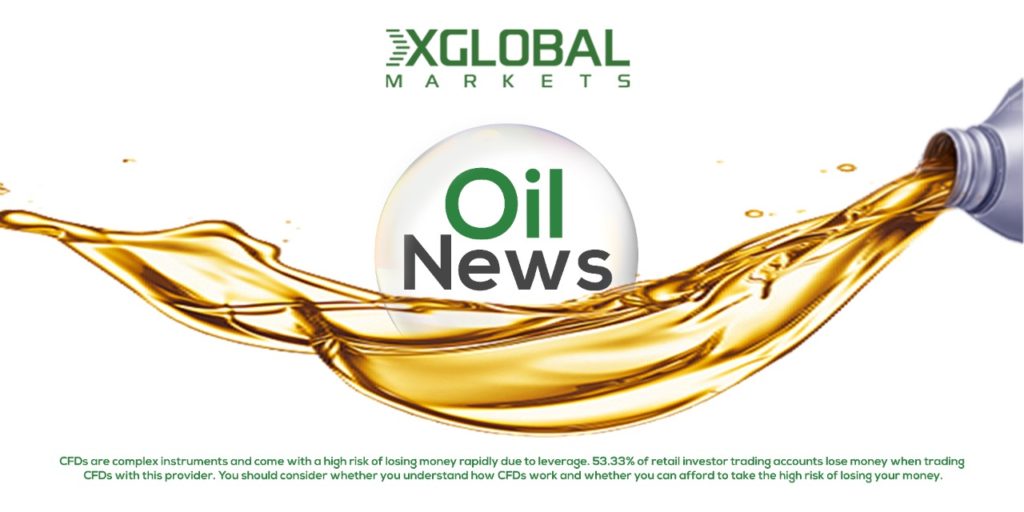Oil Prices Rise 5%.. Brent Crude Is Above $115
Oil prices consolidated their gains by about 5% during trading on Friday, with Brent crude rising above $115, amid fears of Western sanctions that could hamper Russian oil exports, outweighing the possibility of an increase in Iranian supplies.
Global stocks fell, and oil prices rose amid signs of an escalation of the conflict between Russia and Ukraine, after reports that a Ukrainian nuclear power plant, the largest in Europe, caught fire after an attack by Russian forces.
The US economy added 678,000 jobs to the labor market last month, more than analysts’ expectations
It is scheduled to release the report of drilling rigs drilling for oil in the United States during the past week, from Baker Hughes, and that at a later time.
Oil Prices Today
The price of futures contracts for West Texas Intermediate crude – for delivery in April – rose by 5.2%, to reach 113.55 dollars per barrel.
The price of Brent crude futures – for delivery in May 2022 – also rose by 4.3%, recording 115.28 dollars per barrel.
On Thursday, oil prices ended their trading with a decline of about 3%, with Brent crude falling below the level of $111, after touching the $120 barrier earlier in yesterday’s session.
Oil prices are set to record their strongest weekly gains since mid-2020, with West Texas Intermediate crude rising by 21%, and Brent crude by 20%, after hitting its highest level in 10 years this week.
US Sanctions
Oil is rising amid concerns that Western sanctions on Russia over the conflict in Ukraine will disrupt shipments from Russia, the world’s largest exporter of crude oil and petroleum products combined.
Trading activity in Russian crude oil has slowed, as buyers are reluctant to buy because of the sanctions, while there is increasing pressure on US President Joe Biden to ban US imports of Russian oil.
“The escalation of the Russian war in Ukraine has not only created geopolitical risks, but is adding to rising inflationary concerns, as well as increasing risk premiums across space,” said RBC Capital analyst Christopher Looney.
More oil supplies could be added from the coordinated release of 60 million barrels of reserves by developed countries.
On Friday, Japan said it plans to release 7.5 million barrels of oil, although it represents a small portion of its demand.
Prices hovered in the $10 range on Thursday, but settled lower for the first time in 4 sessions.
Investors focused on reviving the Iran nuclear deal, which is expected to boost Iranian oil exports and ease tight global supplies.
Iranian Oil
“Price gains associated with actual and perceived disruptions to Russian oil exports should offset any price declines due to a possible oversupply of Iranian crude,” said Vivek Dar, analyst at Commonwealth Bank of Australia.
Dar expects Brent crude to average $110 a barrel in the second and third quarters of this year, but said, “The risk is that prices will rise above our expectations in the short term.”
He added that Brent crude futures could reach $150, Reuters reported.
Talks about reviving the 2015 Iran nuclear deal are nearing their climax, with talk of an imminent ministerial meeting, with a UN report on Thursday showing that Iran is well on its way to amassing enough enriched uranium for a single bomb if further purified.
JPMorgan Expects Oil Prices To Rise To $185 A Barrel , By The End Of 2022
JPMorgan expects oil prices to rise to $185 a barrel by the end of this year if Russian supply disruptions persist after the invasion of Ukraine.
And the American investment bank indicated – in a research note carried by Bloomberg Agency, today, Thursday – that 66 % of Russian oil exports are currently struggling to find buyers.
With sanctions widening and the shift to energy security an urgent priority in Europe, there are likely to be repercussions for Russian oil sales in Europe and the United States, potentially affecting up to 4.3 million barrels per day, according to the US bank.
The magnitude of the supply shock is so significant in the short term, JPMorgan analysts said, that oil prices need to stabilize at $120 a barrel for several months to negatively affect demand, assuming there is no immediate return to Iranian oil.
Source: XglobalMarkets


